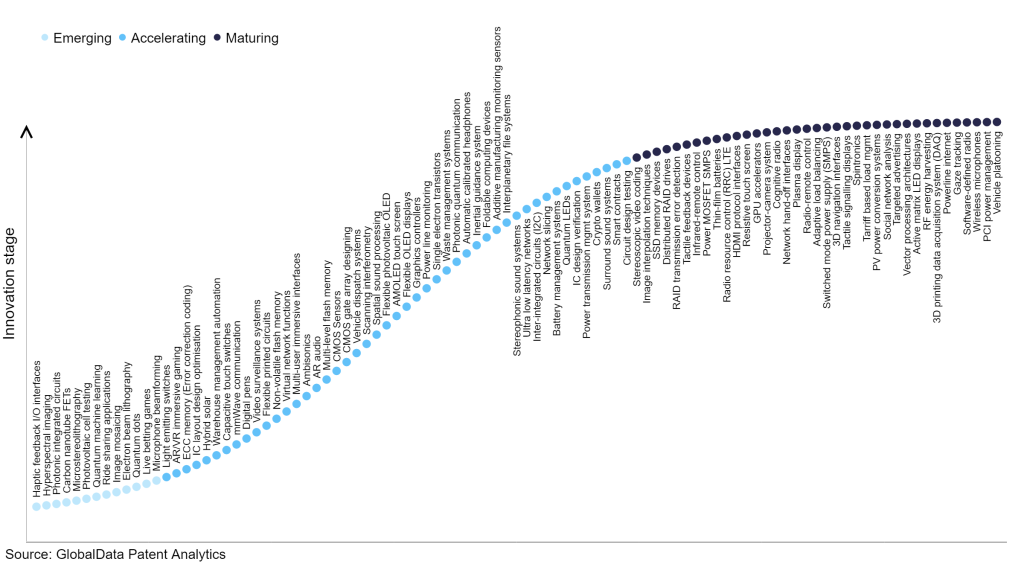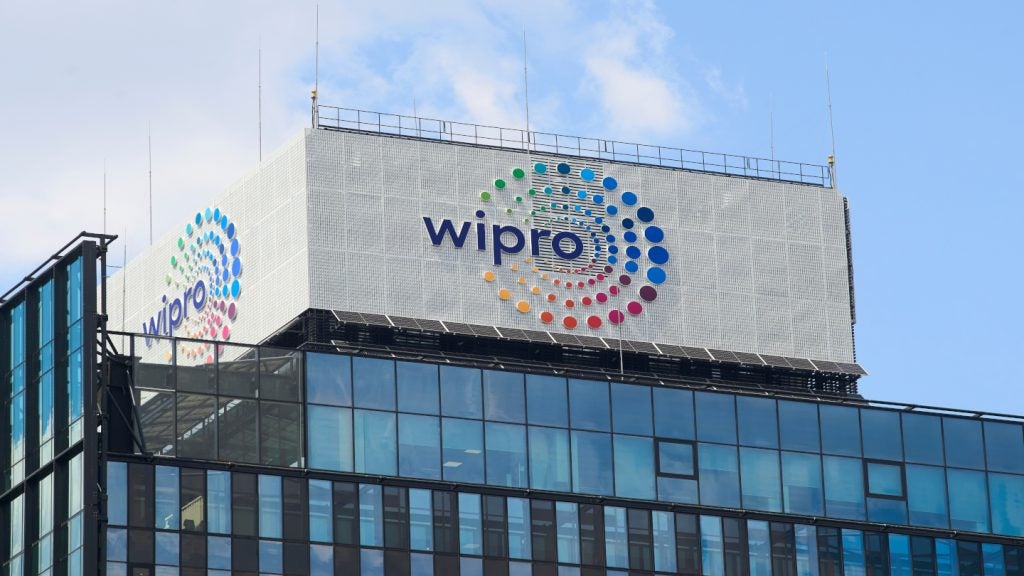The technology industry continues to be a hotbed of innovation, with activity driven by the increasing demand for high-speed data transmission, the proliferation of LTE networks, and the need for enhanced network performance and reliability, and the growing importance of technologies such as advanced signalling protocols, efficient resource scheduling algorithms, and network optimisation techniques to maximise spectral efficiency and improve user experience. In the last three years alone, there have been over 3.6 million patents filed and granted in the technology industry, according to GlobalData’s report on Technology Innovation: Radio resource control (RRC) LTE. Buy the report here.
However, not all innovations are equal and nor do they follow a constant upward trend. Instead, their evolution takes the form of an S-shaped curve that reflects their typical lifecycle from early emergence to accelerating adoption, before finally stabilising and reaching maturity.
Identifying where a particular innovation is on this journey, especially those that are in the emerging and accelerating stages, is essential for understanding their current level of adoption and the likely future trajectory and impact they will have.
300+ innovations will shape the technology industry
According to GlobalData’s Technology Foresights, which plots the S-curve for the technology industry using innovation intensity models built on over 2.5 million patents, there are 300+ innovation areas that will shape the future of the industry.
Within the emerging innovation stage, microphone beamforming, live betting games, and quantum dots are disruptive technologies that are in the early stages of application and should be tracked closely. Circuit design testing, smart contracts, and surround sound systems are some of the accelerating innovation areas, where adoption has been steadily increasing. Among maturing innovation areas are vehicle platooning and peripheral component interconnect (PCI) power management, which are now well established in the industry.
Innovation S-curve for the technology industry

Radio resource control (RRC) LTE is a key innovation area in technology
Radio Resource Control (RRC) is a critical protocol in Long Term Evolution (LTE) networks that oversees the management of radio resources, encompassing radio bearers and radio access bearers. It plays a vital role in facilitating the setup, modification, and termination of radio bearers while offering additional functionalities such as handover, paging, and cell selection/reselection. As an integral component of the LTE system architecture, RRC ensures efficient utilisation and coordination of radio resources for seamless connectivity and optimal network performance.
GlobalData’s analysis also uncovers the companies at the forefront of each innovation area and assesses the potential reach and impact of their patenting activity across different applications and geographies. According to GlobalData, there are 10+ companies, spanning technology vendors, established technology companies, and up-and-coming start-ups engaged in the development and application of radio resource control (RRC) LTE.
Key players in radio resource control (RRC) LTE – a disruptive innovation in the technology industry
‘Application diversity’ measures the number of different applications identified for each relevant patent and broadly splits companies into either ‘niche’ or ‘diversified’ innovators.
‘Geographic reach’ refers to the number of different countries each relevant patent is registered in and reflects the breadth of geographic application intended, ranging from ‘global’ to ‘local’.
Patent volumes related to radio resource control (RRC) LTE
| Company | Total patents (2010 - 2022) | Premium intelligence on the world's largest companies |
| Intel | 649 | Unlock Company Profile |
| Apple | 123 | Unlock Company Profile |
| Network-1 Technologies | 58 | Unlock Company Profile |
| GuangDong OPPO Mobile Telecommunications | 30 | Unlock Company Profile |
| Qualcomm | 23 | Unlock Company Profile |
| Samsung Group | 23 | Unlock Company Profile |
| Huawei Investment & Holding | 22 | Unlock Company Profile |
| Hall Labs | 18 | Unlock Company Profile |
| Alphabet | 16 | Unlock Company Profile |
| Nokia | 16 | Unlock Company Profile |
| Xiaomi | 8 | Unlock Company Profile |
| BlackBerry | 6 | Unlock Company Profile |
| Convida Wireless | 6 | Unlock Company Profile |
| STMicroelectronics | 6 | Unlock Company Profile |
| Sony Group | 6 | Unlock Company Profile |
| International Business Machines (IBM) | 6 | Unlock Company Profile |
| Mojio | 5 | Unlock Company Profile |
| Hewlett Packard Enterprise | 5 | Unlock Company Profile |
| ZTE | 5 | Unlock Company Profile |
Source: GlobalData Patent Analytics
Intel is a leading patent filer in the field of radio resource control (RRC) LTE. One of the company’s patents describes a User Equipment (UE) and methods for Device-to-Device (D2D) communication. The UE can send a D2D discovery status message during an in-network communication session to indicate the initiation or termination of a D2D discovery operation, as well as to indicate whether it is announcing or monitoring. This operation facilitates the configuration of a D2D communication session between the UE and other UEs, enabling the transmission and reception of D2D packets over a direct link to a second UE.
Other prominent patent filers in the space include Apple and Network-1 Technologies.
By geographic reach, Intel leads the pack, followed by Sony and Apple. In terms of application diversity, Network-1 Technologies holds the top position, followed by Hall Labs and International Business Machines (IBM).
RRC in LTE enables efficient utilisation of available radio resources, facilitates seamless handover between cells, enables efficient paging and cell selection/reselection, and ensures smooth and reliable communication for LTE devices. RRC plays a vital role in maintaining the overall performance and quality of service in LTE networks.
To further understand the key themes and technologies disrupting the technology industry, access GlobalData’s latest thematic research report on Technology.
Data Insights
From

The gold standard of business intelligence.
Blending expert knowledge with cutting-edge technology, GlobalData’s unrivalled proprietary data will enable you to decode what’s happening in your market. You can make better informed decisions and gain a future-proof advantage over your competitors.







